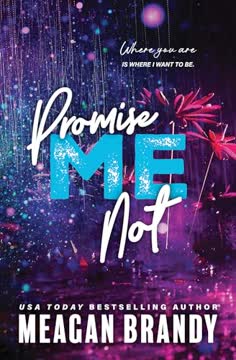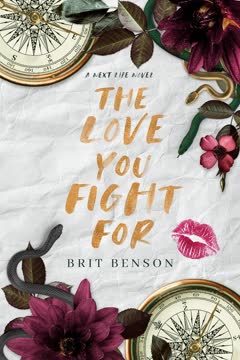Plot Summary
Rain, Birds, and Beginnings
Piper Karel, a shy, awkward young woman working at a fashion firm, finds solace in her daily lunch breaks at a local park. One rainy day, she meets Evan—known as Blue—a tattooed, enigmatic street musician with a loyal dog, Acorn. Their first interactions are marked by curiosity, gentle flirtation, and the sense that both are outsiders in their own ways. Blue's music and presence begin to draw Piper out of her shell, while Piper's kindness and attention awaken something hopeful in Blue. Their connection is immediate, but both are wary, shaped by past hurts and the unpredictability of life.
The Musician and the Ladybug
As Piper and Blue's daily meetings continue, their bond deepens. Blue shares his music, his dog, and his philosophy of living moment-to-moment. Piper, in turn, offers him food, conversation, and a sense of being seen. Blue tells her a myth about ladybugs and love, planting the seed of fate between them. Their relationship is a dance of vulnerability and restraint, with Piper's cautious optimism meeting Blue's restless spirit. The park becomes their sanctuary, a place where they can both be themselves, away from the judgments of the world.
Under the Bridge, Over the Edge
One night, concern for Blue's well-being leads Piper to seek him out under a bridge. Their encounter turns raw and passionate, marking Piper's first sexual experience—intense, unfiltered, and fraught with both pleasure and fear. The aftermath leaves Piper reeling, questioning her choices and her sense of self. Blue's darkness is both alluring and alarming, and Piper is left to navigate the emotional fallout, unsure if she's been liberated or wounded by the experience. Their connection, however, is undeniable, and both are drawn back to each other despite the risks.
Love, Lust, and Liminality
Piper and Blue's relationship oscillates between moments of deep intimacy and periods of distance. Blue's transient lifestyle and aversion to stability clash with Piper's longing for security and belonging. They share stolen nights, confessions, and creative inspiration, but also secrets, misunderstandings, and the ever-present threat of Blue's self-destructive tendencies. Piper's family and friends express concern, unable to understand her attachment to a man who seems determined to remain on the margins. Yet, for Piper, Blue represents a kind of freedom and authenticity she's never known.
The Push and the Pull
As their relationship intensifies, so do the challenges. Blue's struggles with addiction, mental health, and a compulsion to wander create a cycle of closeness and abandonment. Piper tries to help, but her efforts are often met with resistance or withdrawal. Blue's love for Piper is real, but he fears hurting her and being trapped by expectations he can't meet. Piper, meanwhile, is torn between her desire to save him and the toll his instability takes on her own well-being. Their love becomes both a refuge and a battleground.
Addictions and Abandonments
Blue's demons catch up with him, leading to relapses, disappearances, and heartbreaking goodbyes. He leaves Piper and Acorn behind, convinced they're better off without him. Piper is devastated, left to pick up the pieces and care for Acorn, who becomes a symbol of Blue's absence and the love they shared. Time passes, and Piper tries to move on—building a life for herself, finding support in friends like Ditra and Josh, and eventually discovering she's pregnant with Blue's child. The cycle of hope and loss continues, as Piper raises her daughter, Lyric, alone.
Notes, Dogs, and Disappearances
Piper's life is shaped by the notes Blue leaves behind—apologies, declarations of love, and promises of someday. Acorn remains her loyal companion, a living link to Blue. Lyric grows up surrounded by love, but with questions about her absent father. Piper's attempts to date or build a new relationship are haunted by Blue's memory. When Blue's music career unexpectedly takes off, Piper is shocked to hear his voice on the radio, singing songs that echo their story. The past refuses to stay buried, and the possibility of reunion lingers.
Reunions and Reckonings
Blue's success as a musician brings him back into Piper's orbit. Their reunion is fraught with unresolved feelings, guilt, and longing. Blue meets Lyric, and the three begin to form a tentative family. The challenges of Blue's fame, ongoing struggles with addiction and mental health, and the scars of their shared history threaten to unravel their fragile happiness. Piper's friends and family remain skeptical, but Piper is determined to give Blue another chance, believing in the possibility of healing and redemption.
Family, Friends, and Fears
Piper and Blue navigate the complexities of blending their lives—introducing Blue to Piper's family, dealing with the judgments of others, and learning to co-parent Lyric. Josh, Ditra, and others offer support but also voice concerns about Blue's reliability and the risks of trusting him again. Piper's own fears resurface, especially as Blue's mental health remains precarious. Yet, moments of joy, creativity, and genuine connection keep them moving forward, even as the shadows of the past loom.
The Shed, the House, the Home
Blue's inheritance of his childhood home—a decaying house with a shed in the backyard—becomes a metaphor for their journey. Together, they decide to renovate the house, transforming it from a place of pain and neglect into a true home. The process is both literal and symbolic, as they confront old wounds, create new memories, and build a future together. The house becomes a sanctuary, filled with music, laughter, and the family they've fought so hard to create.
Recovery, Relapse, and Reality
Blue's battle with mental illness and addiction reaches a crisis point, culminating in a suicide attempt that nearly ends everything. The aftermath is a period of reckoning for both Piper and Blue, as they confront the reality of his diagnosis, the limitations of love, and the necessity of professional help. Blue's time in treatment is marked by setbacks and progress, and Piper must learn to care for herself and Lyric while supporting Blue from a distance. Their relationship is tested as never before, but the possibility of true healing emerges.
Letters, Loss, and Letting Go
Piper and Blue communicate through letters, phone calls, and carefully managed visits. The pain of Blue's absence is compounded by the loss of a second pregnancy, forcing Piper to confront her own grief and the fragility of hope. Lyric, too, must come to terms with her father's struggles and the uncertainty of their family's future. Through therapy, self-reflection, and the support of friends, Piper learns to let go of the need to fix everything and to accept the imperfect, unpredictable nature of love.
Healing, Hope, and Homecoming
Blue's gradual recovery allows for a slow, cautious reunion. He returns to Piper and Lyric, determined to be present, honest, and accountable. Together, they establish new routines, traditions, and boundaries—balancing Blue's need for stability with Piper's desire for connection. The house becomes a symbol of their resilience, a place where they can both be vulnerable and strong. Music, creativity, and shared rituals help them heal, and the promise of marriage and a future together is renewed.
Lyric's Song, Evan's Truth
Lyric's growth into a talented, compassionate young woman is a testament to Piper's strength and Blue's influence. The family's love of music becomes a source of connection and healing, as Lyric learns to play the harp and collaborates with her father. Blue, now embracing his real name, Evan, finds peace in his roles as partner, father, and artist. The family's journey is marked by honesty about mental health, the importance of support, and the power of creativity to transform pain into beauty.
New Tomorrows, Old Shadows
Even as the family finds stability, the shadows of the past never fully disappear. Blue/Evan's mental health remains a part of their lives, requiring vigilance, compassion, and ongoing care. Piper and Evan learn to accept the unpredictability of life, finding strength in each other and in their shared commitment to growth. The arrival of a second child, Noah, brings both joy and anxiety, as they watch for signs of inherited struggles but also celebrate the uniqueness of each family member.
The Promise of Forever
Piper and Evan's long-awaited wedding is a celebration of endurance, forgiveness, and the triumph of love over adversity. Their vows are not promises of perfection, but of presence, patience, and partnership. The family's home, once a place of abandonment, is now filled with music, laughter, and the rituals that sustain them. The past is honored but not allowed to dictate the future, and the myth of the ladybug becomes a symbol of the enduring magic that brought them together.
The Edge of Madness
The narrative does not shy away from the realities of mental illness, addiction, and the ever-present risk of relapse. Blue's journey is one of survival, not cure—a testament to the power of love, community, and self-acceptance. Piper's role shifts from savior to partner, learning to set boundaries and care for herself as well as her family. The story acknowledges that some wounds never fully heal, but that life can still be rich, meaningful, and full of hope.
Always, Like No Tomorrow
In the end, Piper and Evan's story is one of transformation—of pain into art, of loneliness into belonging, of fear into faith. Their family, forged through struggle and sustained by love, becomes a beacon of resilience. The final scenes are suffused with gratitude, as they reflect on the journey that brought them to a place of peace. The myth of the ladybug endures, a reminder that love, though imperfect and unpredictable, is always worth fighting for.
Characters
Piper Karel
Piper is the heart of the story—a young woman marked by awkwardness, sensitivity, and a longing for connection. Her journey is one of self-discovery, as she learns to balance her desire to save others with the need to care for herself. Piper's love for Blue/Evan is both her greatest strength and her deepest vulnerability, leading her through cycles of hope, heartbreak, and healing. As a mother, friend, and partner, she embodies compassion, patience, and the courage to keep loving in the face of uncertainty. Her growth is defined by her willingness to embrace imperfection, set boundaries, and find meaning in both joy and pain.
Evan "Blue" Von Bleu
Blue/Evan is a complex, magnetic figure—at once charismatic and deeply troubled. His talent as a musician is matched by his struggles with addiction, mental illness, and a lifelong sense of not belonging. Blue's restlessness, creativity, and vulnerability make him both irresistible and unpredictable. His relationship with Piper is transformative, offering him glimpses of hope and home, but also triggering his fears of inadequacy and abandonment. Over time, Evan learns to accept help, confront his past, and redefine himself beyond his pain. His journey is one of survival, self-acceptance, and the ongoing work of healing.
Lyric
Lyric, Piper and Blue's daughter, is a symbol of hope, creativity, and the possibility of generational healing. Sensitive, artistic, and wise beyond her years, Lyric navigates the complexities of her family with grace and resilience. Her love of music connects her to both parents, and her presence challenges them to be honest, present, and accountable. Lyric's growth mirrors the family's journey, as she learns to accept both the gifts and the burdens of her inheritance.
Acorn
Acorn, Blue's dog, is more than a pet—he is a living link between Piper and Blue, a source of comfort, and a reminder of the unconditional love that sustains them. Acorn's presence grounds the story, offering moments of levity, warmth, and emotional truth. His eventual passing is a catalyst for grief, reflection, and the deepening of family bonds.
Ditra
Ditra is Piper's best friend and confidante—a source of humor, support, and tough love. Her own journey through relationships and self-discovery parallels Piper's, and her willingness to challenge Piper's choices is both a blessing and a source of tension. Ditra's loyalty is unwavering, even as she struggles to understand the depth of Piper's attachment to Blue.
Josh
Josh is Piper's longtime friend, roommate, and occasional romantic interest. His presence offers stability, safety, and a glimpse of an alternative path for Piper. Josh's own struggles with identity and belonging mirror those of the main characters, and his eventual acceptance of Piper's choices is a testament to the power of friendship.
Reece
Reece is Blue's closest friend and musical collaborator—a steadying influence and a witness to Blue's struggles. His loyalty, honesty, and willingness to intervene are crucial to Blue's survival and recovery. Reece's own challenges, including single parenthood and the pressures of fame, add depth to the story's exploration of masculinity, vulnerability, and support.
Ellie
Ellie, Blue's older sister, represents the family history of trauma, mental illness, and abandonment. Her revelations about their childhood provide crucial context for Blue's struggles, and her presence challenges Piper to confront the limits of love and the necessity of professional help.
Mickey
Mickey, the family's adopted dog after Acorn's death, is a symbol of resilience, healing, and the ongoing possibility of joy. His bond with Lyric and the family reflects their commitment to caring for each other and embracing new chapters.
Noah
Noah, Piper and Evan's son, embodies both hope and anxiety for the future. His quiet, introspective nature raises questions about inheritance, difference, and the ongoing work of acceptance. Noah's presence challenges the family to remain vigilant, compassionate, and open to whatever comes next.
Plot Devices
Nonlinear, cyclical narrative
The novel's structure mirrors the cycles of addiction, recovery, and relapse, as well as the recurring patterns of love, loss, and reunion. Time is fluid, with flashbacks, letters, and memories interwoven with present action. This cyclical approach emphasizes the ongoing nature of healing and the impossibility of neat resolutions.
Symbolism: Ladybugs, rain, music
Ladybugs represent fate, hope, and the mythic quality of Piper and Blue's connection. Rain and weather mirror the characters' emotional states, offering moments of cleansing, renewal, or foreboding. Music is both a literal and metaphorical language, a means of communication, catharsis, and legacy.
Epistolary elements
Notes, letters, and messages are central to the narrative, serving as confessions, apologies, and declarations of love. These written words allow for intimacy and distance, honesty and evasion, and become a way for characters to process and share what cannot be spoken aloud.
Mental illness as both plot and theme
Blue's struggles with bipolar disorder, depression, and dissociation are not simply obstacles to be overcome, but integral to the story's exploration of love, identity, and survival. The narrative resists easy solutions, instead depicting the ongoing, nonlinear process of managing mental health within a family and a relationship.
Animal companions as emotional mirrors
Acorn and Mickey are not just pets, but emotional barometers and sources of comfort. Their presence grounds the characters, offers unconditional love, and marks the passage of time and the evolution of the family.
Intergenerational trauma and healing
The story acknowledges the ways in which trauma, addiction, and mental illness are passed down through families, but also the potential for healing, growth, and change. Lyric and Noah represent both the risks and the hope of breaking cycles and forging new paths.
Analysis
No Tomorrow is a raw, unflinching exploration of love at the intersection of trauma, addiction, and mental illness. Carian Cole's novel refuses the fantasy of easy redemption, instead offering a portrait of two people who are both transformed and tormented by their connection. The story's power lies in its willingness to dwell in the messiness of real life—the relapses, the betrayals, the moments of grace and the long, hard work of healing. Through Piper and Evan, the novel asks what it means to love someone who cannot always love themselves, and whether love alone is ever enough. The answer is both yes and no: love is not a cure, but it is a reason to keep fighting. The book's ultimate message is one of radical acceptance—of self, of others, of the imperfect, ongoing nature of recovery. In a world that often demands perfection or despair, No Tomorrow insists on the possibility of hope, even in the face of no easy answers.
Last updated:
FAQ
Synopsis & Basic Details
What is No Tomorrow about?
- A tumultuous love story: No Tomorrow follows Piper Karel, a shy young woman, and Evan "Blue" Von Bleu, a charismatic but troubled street musician, whose intense connection is forged in a park and quickly spirals into a complex relationship marked by passion, addiction, and mental health struggles.
- Cycles of connection and loss: The narrative explores their recurring pattern of finding solace and desire in each other, only for Blue's internal demons and transient lifestyle to lead to painful separations and disappearances, leaving Piper to navigate heartbreak and unexpected motherhood.
- The search for home and healing: Ultimately, the story delves into the possibility of recovery, acceptance, and building a stable future together, not by erasing the past or achieving perfection, but by embracing vulnerability and committing to love despite life's inherent messiness.
Why should I read No Tomorrow?
- Raw and unflinching emotional depth: The novel offers a powerful, honest portrayal of love intertwined with serious issues like addiction and mental illness, providing a non-glamorized look at the challenges and complexities involved.
- Compelling character arcs: Readers will be drawn into Piper's journey of self-discovery and resilience, and Blue's fight for survival and healing, witnessing their growth and struggles in a deeply personal way.
- Unique narrative style: Carian Cole employs a cyclical structure and incorporates elements like letters and internal monologue, creating an intimate reading experience that mirrors the characters' emotional states and the unpredictable nature of their relationship.
What is the background of No Tomorrow?
- Contemporary small-town setting: The story is primarily set in a seemingly ordinary New England town, contrasting the mundane backdrop of Piper's office life with the extraordinary and often hidden world she enters with Blue.
- Focus on mental health and addiction: A central theme is the impact of undiagnosed and untreated mental illness (later revealed as bipolar disorder, depression, etc.) and addiction on individuals and relationships, reflecting contemporary awareness of these issues.
- Exploration of societal judgment: The narrative touches on how characters like Blue, living outside conventional norms, are perceived and judged by society, highlighting Piper's defiance of these judgments in choosing to love him.
What are the most memorable quotes in No Tomorrow?
- "I love you like no tomorrow.": This recurring phrase, often spoken by Blue, encapsulates the intensity and precariousness of their love, suggesting both a desperate present focus and the constant threat of abrupt endings. It becomes a central theme in No Tomorrow.
- "You're the only one that's ever looked past the dirt to see the flowers, Ladybug.": Blue's poignant observation highlights Piper's unique ability to see beyond his struggles and societal labels, recognizing the inherent worth and beauty within him, which is key to his character motivation.
- "I didn't want to die... That's not what any of this was about.": Spoken by Blue after his suicide attempt, this reveals the complex internal battle he faced, suggesting his actions were an attempt to escape overwhelming internal pain rather than a desire to end his life, offering crucial No Tomorrow ending explained context.
What writing style, narrative choices, and literary techniques does Carian Cole use?
- First-person perspective: The story is primarily told from Piper's point of view, offering intimate access to her thoughts, feelings, and confusion, drawing the reader deeply into her emotional experience.
- Symbolism and motifs: Recurring symbols like ladybugs, rain, and music are woven throughout the narrative, adding layers of meaning and connecting seemingly disparate events to core themes of fate, hope, and emotional states.
- Nonlinear structure and epistolary elements: The use of flashbacks, internal reflections, and letters/notes creates a fragmented, cyclical feel that mirrors the unpredictable nature of the characters' lives and relationships, enhancing the exploration of themes in No Tomorrow.
Hidden Details & Subtle Connections
What are some minor details that add significant meaning?
- The shattered compact mirror: Early in Chapter 1, Piper's mirror shatters after the bird incident. This seemingly minor mishap subtly foreshadows the breaking of her carefully constructed, predictable life and self-image upon meeting Blue, linking environmental details to character transformation.
- Blue's consistent use of his old wallet: Despite achieving fame and wealth, Blue is noted to still carry the same worn wallet from his street musician days (Chapter 41). This small detail symbolizes his internal struggle with his new identity and wealth, suggesting a part of him remains tethered to his past self and experiences, impacting his character motivation.
- The skull ring on Blue's finger: Piper notices the silver skull ring during their intimate encounters (Chapter 4). While seemingly just part of his aesthetic, the skull can symbolize mortality, danger, or transformation, subtly hinting at the darker aspects of his life and the profound, sometimes perilous, change he brings to hers.
What are some subtle foreshadowing and callbacks?
- The psychic's ambiguous predictions: Loretta the psychic's reading (Chapter 35) contains vague but potent phrases like "shrouded," "illness," "dark cloud of death looming," and "keys," which subtly foreshadow Blue's mental health crisis, near-death experience, and the eventual revelation about his childhood home and its keys.
- Blue's comment about the bird not knowing it could fly: When discussing his childhood pet bird (Chapter 34), Blue says, "I don't think he knew he could." This mirrors Blue's own perceived limitations and fear of true freedom or happiness, subtly foreshadowing his later attempt to "fly" as an escape, linking animal symbolism to his psychological state.
- The recurring phrase "like no tomorrow": Beyond the title, this phrase is used by Blue in declarations of love and in his suicide note (Chapter 53). Its repetition evolves from expressing intense, present love to signifying a literal desire for no future, serving as a powerful callback that underscores the tragic turn in his mental state and provides crucial No Tomorrow ending explained context.
What are some unexpected character connections?
- Ellie's connection to the park and the dog: Piper learns that Ellie, Blue's sister, is the woman she saw in the park who gave Acorn the tennis ball (Chapter 56). This reveals a hidden layer to Blue's past interactions and highlights how his family members were subtly present in Piper's life before she knew their true connection to him.
- Josh's unexpected bisexuality: Piper discovers Josh's attraction to men through candid photos (Chapter 19). This revelation re-contextualizes their past relationship and his reluctance to pursue a deeper romantic connection with her, adding complexity to his character beyond just being the "safe" option and mirroring themes of hidden identities.
- Reece's own experience with custody issues: Reece mentions his ex relinquished custody of their child (Chapter 48). This shared experience of navigating complex family dynamics and the pain of separation creates an unexpected parallel between Reece and Piper, strengthening their bond and Reece's empathy for her situation with Blue and Lyric.
Who are the most significant supporting characters?
- Reece Blackstone: More than just a bandmate, Reece acts as Blue's anchor, confidante, and surrogate family. He is crucial to Blue's survival, recovery, and eventual return to Piper, often serving as a bridge for communication and providing essential context about Blue's struggles (Reece Blackstone explained).
- Ditra: Piper's best friend provides unwavering emotional support, tough love, and a grounding presence. Her skepticism about Blue highlights the external judgment Piper faces, while her eventual acceptance and practical help (like offering her home) underscore the importance of true friendship (Ditra explained).
- Josh: As Piper's friend and roommate, Josh offers stability, paternal support for Lyric, and a contrasting example of a "normal" life. His presence highlights Piper's choice to pursue a complex love with Blue over a potentially simpler one with him, while his own journey adds depth to themes of identity and acceptance (Josh explained).
Psychological, Emotional, & Relational Analysis
What are some unspoken motivations of the characters?
- Blue's need for control through chaos: While seemingly seeking freedom, Blue's transient lifestyle and self-destructive behaviors can be interpreted as an unconscious attempt to control his internal chaos by externalizing it. By constantly moving and disrupting his life, he might feel a sense of agency over the unpredictable "voices" and moods he experiences, a key aspect of his Blue motivation.
- Piper's subconscious desire for intensity: Despite her outward shyness and preference for routine, Piper is drawn to Blue's intensity and unpredictability. Her willingness to step outside her comfort zone for him suggests an unspoken longing for a life less ordinary, perhaps fueled by feeling like a "misfit" in her own family.
- Josh's protective instinct as a substitute for romantic love: Josh's deep care for Piper and Lyric, and his offer to co-parent, might stem from an unspoken need to build a family unit and provide the stability he couldn't offer romantically due to his own identity struggles, fulfilling a desire for connection through a non-traditional structure.
What psychological complexities do the characters exhibit?
- Blue's dissociative episodes and "the bird": Blue's experience of "the bird" and hearing voices, later linked to dissociative and bipolar disorders, highlights the complex reality of living with mental illness where internal experiences can feel external and influence behavior, providing insight into Blue's mental health.
- Piper's germaphobia and need for control: Piper's extreme germaphobia and need for order (e.g., organizing paperclips, avoiding shared food) serve as a psychological counterpoint to Blue's chaos. Her willingness to abandon these compulsions for him (e.g., kissing him after he licks her ice cream, having sex in dirty places) demonstrates the powerful, almost destabilizing, effect his presence has on her carefully managed internal world.
- Intergenerational patterns of trauma: Ellie's revelations about their mother's mental illness and their father's abuse (Chapter 56) reveal a history of trauma and neglect that likely contributed to Blue's psychological struggles, illustrating how mental health issues and coping mechanisms can be passed down through families, impacting themes in No Tomorrow.
What are the major emotional turning points?
- The first night under the bridge: This encounter (Chapter 3) is a pivotal emotional turning point for Piper, shattering her innocence and forcing her to confront intense desire, fear, and the unpredictable nature of her connection with Blue, fundamentally altering her self-perception.
- Blue's disappearance after the apartment conversation: Blue's sudden departure after Piper suggests living together (Chapter 10) is a devastating emotional turning point, confirming Piper's deepest fears of abandonment and forcing her to build a life independently, leading to the discovery of her pregnancy.
- The hospital visit after the suicide attempt: Seeing Blue severely injured and learning the truth about his mental illness and suicide attempt (Chapter 53) is a brutal emotional reckoning. It shifts Piper's role from potential savior to supportive partner in his recovery, forcing her to confront the severity of his struggles and the limits of her understanding.
How do relationship dynamics evolve?
- From fleeting park encounters to intense intimacy: The relationship rapidly escalates from casual observation and brief conversations to deep emotional and physical connection, driven by an undeniable mutual pull that bypasses conventional dating stages.
- Navigating cycles of presence and absence: The dynamic is defined by Blue's unpredictable disappearances and returns, forcing Piper to develop resilience and independence while grappling with the pain of abandonment and the challenge of rebuilding trust each time.
- Shifting from codependency to mutual support: As Blue enters recovery and Piper finds her own stability, their dynamic evolves from one where Piper often felt responsible for "fixing" Blue to a partnership based on honesty, mutual support, and acceptance of each other's vulnerabilities and ongoing needs.
Interpretation & Debate
Which parts of the story remain ambiguous or open-ended?
- The exact nature and severity of Blue's delusions: While diagnosed with multiple conditions, the narrative leaves some ambiguity about the specific content and frequency of Blue's hallucinations and voices throughout his life, particularly before his hospitalization, allowing for reader interpretation of his past behavior.
- The extent of Blue's self-awareness before treatment: It's debatable how much Blue truly understood about his mental illness and its impact on his actions before receiving a formal diagnosis and therapy. His claims of "not knowing why" he messed things up could be genuine confusion or a coping mechanism, leaving his past motivations open to interpretation.
- The long-term stability of their future: While the epilogue depicts a period of happiness and stability, the story acknowledges that mental illness requires ongoing management ("Forever, basically"). The ending is hopeful but implicitly open-ended, leaving readers to ponder the potential for future challenges and the enduring strength of their commitment.
What are some debatable, controversial scenes or moments in No Tomorrow?
- The first sexual encounter under the bridge: This scene (Chapter 3) is highly debatable regarding consent and power dynamics. While Piper states she didn't say no and later reflects she "liked this," the context of her fear, vulnerability, and Blue's aggressive actions ("raw, rough, and unapologetically demanding," "grabs the back of my head," "chokehold") raises questions about the nature of her consent and whether it was truly desired or a reaction to shock and intimidation.
- Piper's decision to stay with Blue despite red flags: Readers may debate the ethics and wisdom of Piper repeatedly re-engaging with Blue despite his disappearances, drug use, and emotional instability, particularly after becoming a mother. Her choices can be seen as either fiercely loyal love or enabling behavior, sparking controversy among readers.
- Blue's abandonment of Acorn: Blue leaving his beloved dog with Piper (Chapter 14) is a controversial action that even Piper struggles to reconcile. While later explained as believing Acorn was better off with her, it can be interpreted as a selfish act stemming from his inability to cope, sparking debate about his character and capacity for responsibility.
No Tomorrow Ending Explained: How It Ends & What It Means
- Resolution through acceptance, not cure: The ending reveals that Blue (now primarily referred to as Evan) has received a diagnosis and is managing his mental illness through medication and therapy. He hasn't been "cured" but has found stability and self-awareness, signifying that recovery is an ongoing process, central to the No Tomorrow ending explained.
- Building a life based on honesty and presence: Evan and Piper marry, renovate his childhood home, and raise their daughter Lyric and son Noah together. Their life is depicted as happy and stable, built on open communication about Evan's mental health and a commitment to being present for each other, contrasting sharply with their past cycles of secrecy and abandonment.
- The enduring power of love and resilience: The epilogue emphasizes that their love, though forged through immense pain and struggle, ultimately triumphed. The presence of their children and the transformation of the abandoned house into a loving home symbolize healing and new beginnings, suggesting that while scars remain, a fulfilling "forever" is possible through mutual support and unwavering commitment, providing a hopeful No Tomorrow ending explained.
Review Summary
No Tomorrow is a deeply emotional and polarizing novel that spans decades, following the tumultuous relationship between Piper and Blue. Many readers praise the raw, realistic portrayal of addiction, mental illness, and unconditional love, finding the story captivating and heart-wrenching. Others criticize the toxic relationship dynamics and Piper's perceived naivety. The book elicits strong reactions, with some hailing it as a masterpiece while others express frustration with the characters' choices. Overall, it's described as an intense, gritty read that leaves a lasting impact.
Similar Books
Download PDF
Download EPUB
.epub digital book format is ideal for reading ebooks on phones, tablets, and e-readers.

















